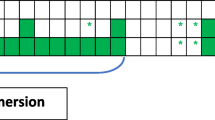Abstract
Introduction
Historical bias toward service-oriented inpatient graduate medical education experiences has hindered both resident education and care of patients in the ambulatory setting.
Aim
Describe and evaluate a residency redesign intended to improve the ambulatory experience for residents and patients.
Setting
Categorical Internal Medicine resident ambulatory practice at the University of Cincinnati Academic Health Center.
Program Description
We created a year-long continuous ambulatory group-practice experience separated from traditional inpatient responsibilities called the long block as an Accreditation Council for Graduate Medical Education Educational Innovations Project. The practice adopted the Chronic Care Model and residents received extensive instruction in quality improvement and interprofessional teams.
Program Evaluation
The long block was associated with significant increases in resident and patient satisfaction as well as improvement in multiple quality process and outcome measures. Continuity and no-show rates also improved.
Discussion
An ambulatory long block can be associated with improvements in resident and patient satisfaction, quality measures, and no-show rates. Future research should be done to determine effects of the long block on education and patient care in the long term, and elucidate which aspects of the long block most contribute to improvement.
Similar content being viewed by others
References
Association of Program Directors in Internal Medicine, Fitzgibbons JP, Bordley D, Berkowitz L, Miller BW, Henderson MC. Redesigning residency education in internal medicine: a position paper from the association of program directors in internal medicine. Ann Intern Med. 2006;144:920–6.
Weinberger SE, Smith LG, Collier VU, Education Committee of the American College of Physicians. Redesigning training for internal medicine. Ann Intern Med. 2006;144:927–32.
Sisson SD, Boonyasai R, Baker-Genaw K, Silverstein J. Continuity clinic satisfaction and valuation in residency training. J Gen Intern Med. 2007;22:1704–10.
Bowen JL, Salerno SM, Chamberlain JK, Eckstrom E, Chen HL, Brandenburg S. Changing habits of practice. Transforming internal medicine residency education in ambulatory settings. J Gen Intern Med. 2005;20:1181–7.
Stevens DP, Wagner EH. Transform residency training in chronic illness care—now. Acad Med. 2006;81:685–7.
The Breakthrough Series: IHI’s Collaborative Model for Achieving Breakthrough Improvement. IHI Innovation Series white paper. Boston: Institute for Healthcare Improvement; Available at: http://www.ihi.org/IHI/Results/WhitePapers/TheBreakthroughSeriesIHIsCollaborativeModelforAchieving+BreakthroughImprovement.htm. Accessed June 26, 2007.
American College of Physicians. The Impending Collapse of Primary Care Medicine and Its Implications for the State of the Nation’s Health Care: Report from the American College of Physicians. Available at: http://www.acponline.org/hpp/statehc06_1.pdf. Accessed August 16, 2008.
Arora V, Guardiano S, Donaldson D, Storch I, Hemstreet P. Closing the gap between internal medicine training and practice: recommendations from recent graduates. Am J Med. 2005;118:680–5. discussion 685–7.
McGlynn EA, Asch SM, Adams J, et al. The quality of health care delivered to adults in the United States. N Engl J Med. 2003;348:2635–45.
Holmboe ES, Bowen JL, Green M, et al. Reforming internal medicine residency training. A report from the society of general internal medicine’s task force for residency reform. J Gen Intern Med. 2005;20:1165–72.
Residency Review Committee for Internal Medicine. Educational Innovation Project; 2005. Available at: http://www.acgme.org/acWebsite/RRC_140/140_EIPindex.asp. Accessed June 26, 2007.
Bodenheimer T, Wagner EH, Grumbach K. Improving primary care for patients with chronic illness. JAMA. 2002;288:1775–9.
Bodenheimer T, Wagner EH, Grumbach K. Improving primary care for patients with chronic illness: the chronic care model, part 2. JAMA. 2002;288:1909–14.
Grant RW, Meigs JB. Overcoming barriers to evidence-based diabetes care. Curr Diabetes Rev. 2006;2:1–9.
Wagner EH, Austin BT, Von Korff M. Organizing care for patients with chronic illness. Milbank Q. 1996;74:511–44.
Wagner EH. Chronic disease management: what will it take to improve care for chronic illness? Eff Clin Pract. 1998;1:2–4.
Wagner EH, Austin BT, Davis C, Hindmarsh M, Schaefer J, Bonomi A. Improving chronic illness care: translating evidence into action. Health Aff (Millwood). 2001;20:64–78.
Langley GL, Nolan KM, Nolan TW, et al. The Improvement Guide: a Practical Approach to Enhancing Organizational Performance. San Francisco, CA: Jossey-Bass Publishers, 1996.
Perlin JB, Kolodner RM, Roswell RH. The veteran’s health administration: quality, value, accountability, and information as transforming strategies for patient-centered care. Am J Manag Care. 2004;10:828–36.
Cleary PD, Edgman-Levitan S. Health care quality. Incorporating consumer perspectives. JAMA. 1997;278:1608–12.
Hargraves JL, Hays RD, Cleary PD. Psychometric properties of the consumer assessment of health plans study (CAHPS) 2.0 adult core survey. Health Serv Res. 2003;38:1509–27.
Veloski J, Boex J, Grasberger MJ, Evans A, Wolfson DB. Systematic review of the literature on assessment, feedback and physicians’ clinical performance: BEME guide no. 7. Med Teach. 2006;28:117–28.
Davidoff F, Batalden P. Toward stronger evidence on quality improvement. Draft publication guidelines: the beginning of a consensus project. Qual Saf Health Care. 2005;14:319–25.
Walshe K. Understanding what works—and why—in quality improvement: the need for theory-driven evaluation. Int J Qual Health Care. 2007;19:57–9.
Minkman M, Ahaus K, Huijsman R. Performance improvement based on integrated quality management models: what evidence do we have? A systematic literature review. Int J Qual Health Care. 2007;19:90–104.
Warm EJ. Diabetes and the chronic care model. Curr Diabetes Rev. 2007;3:219–25.
Acknowledgements
The authors have no acknowledgements to report.
Conflict of Interest
None disclosed.
Author information
Authors and Affiliations
Corresponding author
Rights and permissions
About this article
Cite this article
Warm, E.J., Schauer, D.P., Diers, T. et al. The Ambulatory Long-Block: An Accreditation Council for Graduate Medical Education (ACGME) Educational Innovations Project (EIP). J GEN INTERN MED 23, 921–926 (2008). https://doi.org/10.1007/s11606-008-0588-y
Published:
Issue Date:
DOI: https://doi.org/10.1007/s11606-008-0588-y




